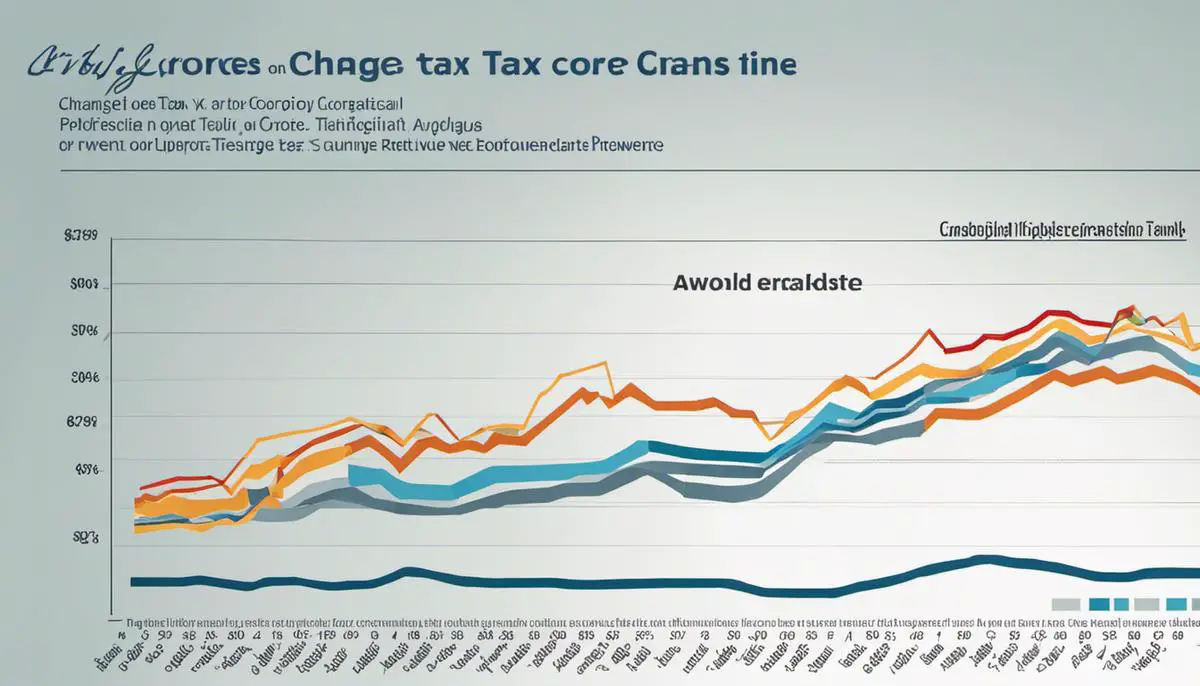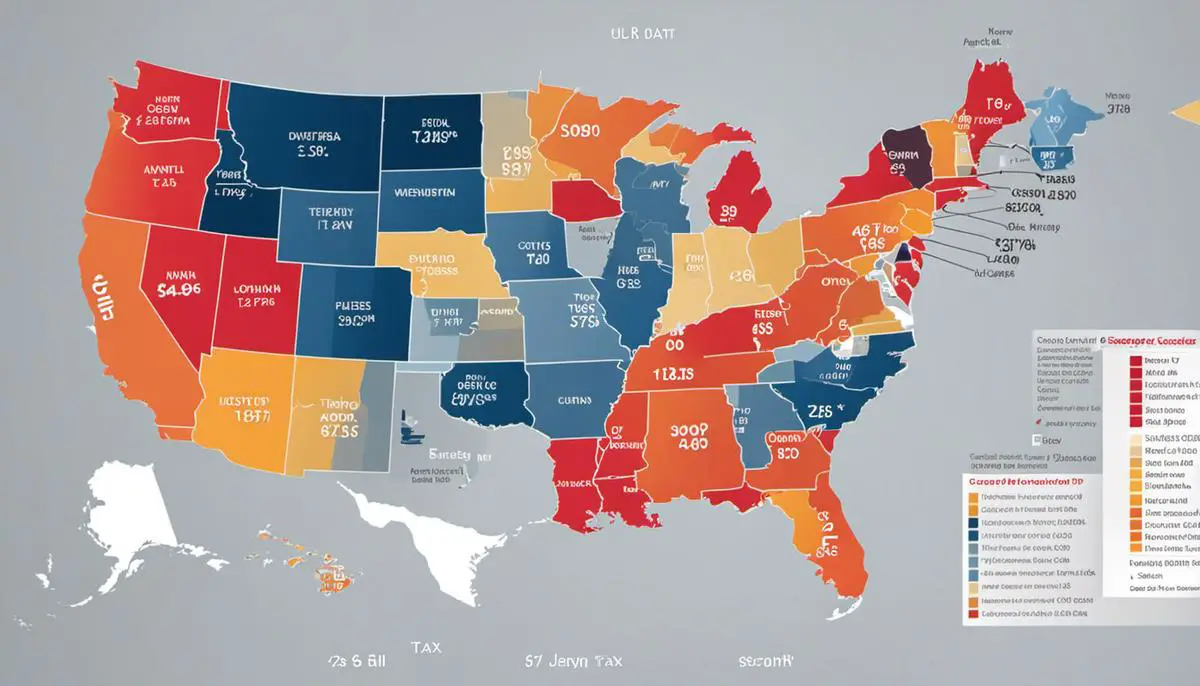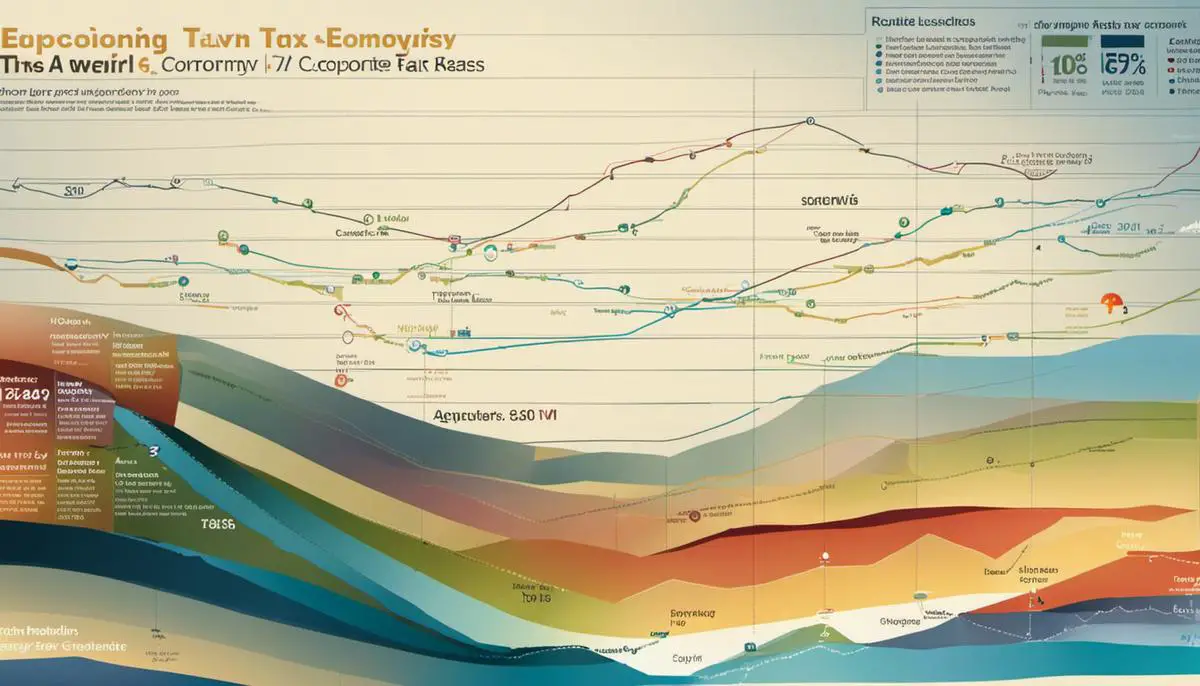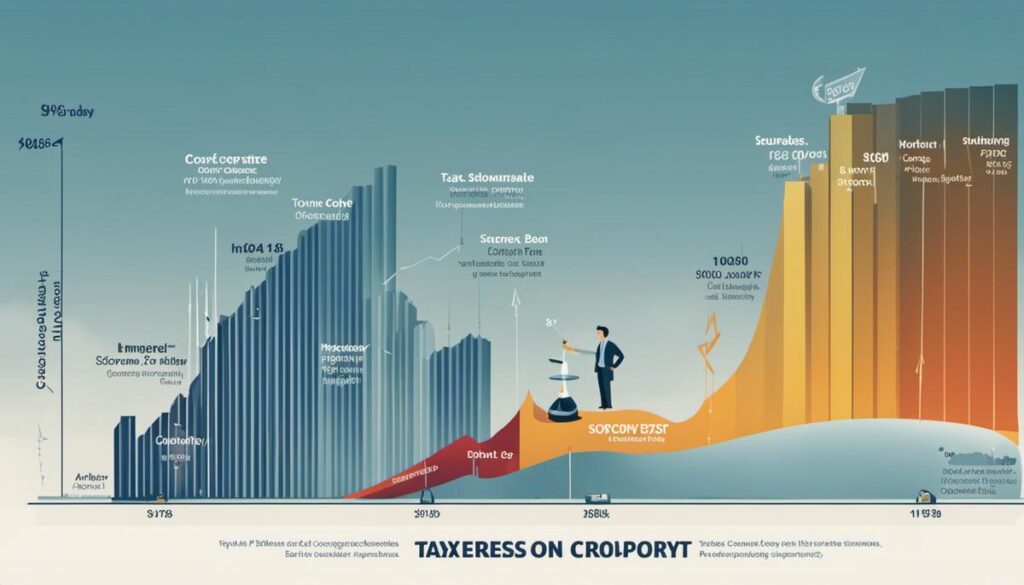The subject of corporate tax can be undeniably complex and intimidating, often shrouded in layers of advanced economic theory and intricate policy details. Nonetheless, its relevance permeates every sector of the economy and, consequently, our everyday lives. This exploration demystifies the realm of corporate tax, starting with an introduction to its fundamental concepts, and proceeding to unravel its historical trajectory in the United States. Key features of the current U.S. corporate tax landscape will be examined, followed by a comparative overview with other nations across the globe. Finally, we will dive into the broader economic and societal implications of corporate tax rates, including their impact on job creation, income inequality, and consumer welfare.
Understanding the Basics of Corporate Tax
Understanding Corporate Tax
The corporate tax is a tax levied by various jurisdictions on the profits made by companies or associations and often include capital gains of a company. These taxes are a major source of income for governments around the world. They are often based on the net income of the company, which is calculated by deducting all allowable expenses from their total receipts. Allowable expenses under corporation tax laws usually include the costs of doing business, depreciation of assets, and interest expense.
Calculation of Corporate Tax
Corporate tax is calculated on the taxable profits of the company. The taxable profit is normally calculated as the company’s total, or gross, income minus deductible business expenses. These expenses can include employee salaries, rent or mortgage payments, utility costs, business travel, cost of goods sold (COGS), and other similar costs of conducting business.
Once the taxable profit is determined, the actual corporate tax payment is computed by applying the applicable corporate tax rate to the taxable income. As an example, if a corporation has a taxable income of $1 million, and the corporate tax rate is 21% (the current federal tax rate in the U.S.), then it owes $210,000 in taxes.
Role in the Economy
The role of corporate taxes in an economy is often a matter of economic and political debate. On one hand, corporate taxes provide significant revenue for governments. In the United States, for example, the corporate tax is a significant source of federal government revenue.
However, the impact of corporate taxes on a nation’s economy isn’t just limited to revenue generation. Higher corporate tax rates can potentially discourage investment because they reduce the amount of after-tax profit that may be reinvested or returned to shareholders. Some economists argue that high corporate tax rates make a country less attractive for business, potentially impacting job and economic growth. Therefore, governments must strike a balance between setting corporate tax rates that are competitive, while still providing sufficient public revenue.
Understanding Corporate Taxation: Crucial Terminology
- Gross Income: The sum total of income accrued by a corporation before the deduction of any expenses.
- Taxable Income: This is the portion of the income that is subject to taxation. It is derived by subtracting permissible expenses from the gross income.
- Corporate Tax Rate: This is the percentage at which a corporation’s income is taxed. Presently, the federal corporate tax rate in the United States stands at 21%.
- Capital Gains: These are profits that are obtained from the sale of an investment or property. Capital gains are subject to tax in most jurisdictions.
- Tax Deductions: These are business expenditures which can be deducted from a corporation’s gross income before it is subject to taxation. This substantially lowers the total amount that is taxable, and consequently cuts down the corporation’s tax liability.
- Tax Credits: This is a benefit that empowers corporations to subtract the amount of the credit directly from the total amount owed in taxes. This differs from exemptions and deductions which reduce the income that is liable to tax.
- Deferred Taxes: This is a balance sheet liability that arises from income that has been earned, but not yet taxed.

Historical Overview of Corporate Tax Rates in the U.S.
The Evolution of Corporate Tax Rates in the U.S.
The concept of corporate taxation in the United States has its origins in the Civil War era when a temporary tax was imposed on corporate and partnership profits. This tax was levied until 1870. It wasn’t until 1909 that the United States implemented its first permanent corporate tax. This was made possible by the ratification of the 16th Amendment to the Constitution in 1913, which sanctioned a federal income tax. By the time America was engaged in World War I in 1918, the corporate tax rate had been increased to 12%, with the primary aim of financing the war efforts.
The 20th Century and Corporate Tax Rates
The 20th century was marked by significant fluctuations in corporate tax rates. The Second World War saw the highest corporate tax rate in U.S. history at 52% in 1952, which increased to an all-time peak of 53% in 1968. This rate decreased to 46% by 1980 and to 34% by the end of the 1980s. The Tax Reform Act of 1986 not only lowered corporate tax rates but also eliminated several corporate tax preferences, taking the top rate from 46% to 34%.
Corporate Tax Rates in the 21st Century
The start of the 21st century witnessed more changes to the corporate tax rate structure. The Jobs and Growth Tax Relief Reconciliation Act of 2003 lowered tax rates on dividends and capital gains, impacting the effective corporate tax rates. In 2017, under the Tax Cuts and Jobs Act, the corporate tax rate was cut significantly from 35% to 21% starting in 2018. This overhaul marked a historical shift in the U.S. corporate tax rate, making it more in line with the corporate tax rate in other developed countries.
Recent Developments and Debates
In recent years, there has been ongoing debate about the U.S. corporate tax rate. Some argue for further rate cuts to stimulate business investment and economic growth, while others call for rate increases to generate revenue and address income inequality. The impact of established trade agreements, global pandemic’s effect on businesses, as well as shifts in international relations have added to the complexity of this debate.
Exploring the Implications of Corporate Tax Policy Alterations
Recent changes in corporate tax rates have had significant implications. Some argue that the reduction in corporate tax rates has rendered the U.S. a more appealing destination for businesses to establish and invest. On the flip side, the decline in corporate tax income has amplified deficits, sparked debates concerning the sustenance of crucial government services, and raised questions about tax system equitability. Alongside these, it’s crucial to understand that corporations typically don’t pay the statutory tax rate due to various tax breaks and loopholes. Grasping this historical backdrop is indispensable when crafting future corporate tax policies.

Analyzing Current U.S. Corporate Tax Rates
Decoding U.S Federal Corporate Tax Rates
Profits earned by corporations in the United States are liable to federal corporate income tax. At present, i.e., the year 2021, the statutory federal corporate tax rate is pegged at a flat 21%. This marks a significant dip from the erstwhile rate of 35%, which was overhauled as a part of the Tax Cuts and Jobs Act that took effect in 2018. Today, the 21% rate applies uniformly to all corporate income, thus eliminating the earlier tiered rate structure.
What needs to be highlighted here is that the statutory rate does not represent the tax corporations pay on each dollar earned as profit. Although the profits disclosed in financial reports adhere to this rate, the effective tax rate—in other words, the actual rate paid by corporations after factoring in different tax deductions and credits—could be significantly lower.
State and Local Corporate Tax Rates
In addition to federal taxes, most states levy their own corporate income taxes, further increasing the tax obligations for U.S. corporations. State corporate income taxes vary greatly across the country. For instance, Iowa has the highest top statutory corporate tax rate at 12%, followed closely by Pennsylvania at 9.99%. On the other hand, some states, like Nevada, South Dakota, and Wyoming, do not impose any corporate income tax at all.
Like federal taxes, state tax rates are statutory. The effective state tax rate that corporations pay may be lower after state-specific tax deductions and credits are taken into account. Some states also allow for local municipalities to levy their own separate corporate income taxes, adding another layer to the corporate tax structure.
Heterogeneity in Corporate Tax Rates
Corporate tax rates can also vary according to the size and structure of a corporation. Small businesses corporations, known as “S corporations”, are subject to pass-through taxation. Rather than paying the corporate tax rate, S corporation shareholders pay individual income tax rates on their share of the company’s income. This can result in different tax obligations depending on the individual tax rates of the shareholders.
While large corporations often have tax departments dedicated to minimizing tax obligations, small corporations may face proportionally larger tax burdens due to the complex nature of the tax code. The 2017 Tax Cuts and Jobs Act aimed to alleviate some of this burden by providing a 20% deduction for qualified business income from pass-through entities, but the application of this deduction is subject to various limitations.
The Consequences of Tax Avoidance
Uncertainties in examining corporate tax rates can be largely attributed to tax avoidance tactics, including the shift of profits to regions imposing lower taxes. This particular practice is employed by some wealthier multinational corporations, permitting the reduction of their effective tax rates considerably by reallocating profits to lower tax rate territories. The concern arising from such profit shifting behaviour has sparked international debates proposing the implementation of a global minimum for corporate taxation.

International Comparison of Corporate Tax Rates
A Closer Look at Corporate Tax Rates
Corporate tax can be defined as a tax imposed on a company’s profits intended to generate revenue. It’s vital to understand that corporate tax rates are enormously influential in the business world. These rates partly guide corporations in their investment-concerned decisions. Moreover, they impact business processes’ simplicity and the attraction of offshore investments. In a global economic perspective, when corporate tax rates escalate unusually, it may compel companies to consider relocation to places that offer more favourable tax rates.
U.S. Corporate Tax Rates in International Context
As per the Tax Foundation, the United States, prior to the 2017 Tax Cuts and Jobs Act (TCJA), had the fourth highest nominal corporate income tax rate in the world. The country had a combined statutory federal and state corporate tax rate of 38.9%, which was significantly higher compared to the worldwide average of 24.18%.
Post TCJA, the federal statutory corporate tax rate in the United States was lowered from 35% to 21%. According to the OECD, the reduction brought the U.S. combined corporate tax rate (federal and state) to around 25.8%, which is closer to the average of other developed countries under the OECD.
Comparison with Other Countries
Despite the significant rate cut, the United States remains in competition with several other developed countries that offer even lower corporate tax rates. Countries like Ireland (12.5%), Canada (26.5%), and the United Kingdom (19%) boast significantly lower rates, which make them attractive destinations for multinational companies.
In contrast, countries like Japan and France have higher corporate tax rates (29.74% and 32% respectively), leading to more challenging business environments from a tax perspective.
Impact on Foreign Investments
Countries with lower tax structures like Ireland, Singapore, and Canada often attract a significant amount of foreign investment due to their favorable business environments. High corporate tax rates can act as a barrier to investment, as investors might have to deal with decreased post-tax returns on their investments.
For instance, a study by economists Ruud de Mooij and Sjef Ederveen found a strong negative relationship between corporate tax rates and foreign direct investment. High corporate tax rates can therefore lead to a decrease in foreign investment inflows, which might hamper economic growth.
Wrapping up the U.S.’s Current Stance
In the previous years, the U.S. has positioned itself as more competitive in the global economic stage, thanks in part to the reduced corporate tax rates provided by the TCJA. Despite this stride, it’s unclear how the U.S. will fare in the face of ongoing international tax disputes and the never-ending pressure of global economic competition. Supporters of the reduced tax rate believe it incites domestic investments and economic acceleration. However, some detractors are of the view that the benefits of such rate cuts are overly skewed towards corporations and high-income earners without a guaranteed positive impact on economic growth.

The Economic and Social Impact of Corporate Tax Rates
The Link Between Corporate Tax Rates and Job Opportunities
When discussing the economic implications of corporate tax rates, one can’t help but note the crucial role they play in the creation of jobs. There’s empirical evidence pointing towards the deterrent effect that high corporate taxes play in hindering businesses from embarking on new ventures, groundbreaking innovations, and growth measures—all of which could otherwise potentially lead to new jobs. Economists Kevin Hassett and Aparna Mathur inferred from their theoretical calculations that a mere 1% increase in corporate tax rates can catalyze a 0.5% dip in employment rates. This line of thinking brings to light the possibility of leveraging tax rate reductions to fuel job growth.
Corporate Tax Rates and Income Inequality
Another important consideration is the impact of corporate tax rates on income inequality. Some argue that high corporate tax rates can reduce income inequality by levying a greater burden on large corporations and wealthy shareholders, theoretically redistributing wealth. However, others caution that this effect may not be as significant as it appears. Corporate taxes impact all shareholders, many of whom are not particularly wealthy, such as pension funds and 401(k) holders. Additionally, when corporations face high tax rates, they often pass on these costs by lowering wages or cutting jobs—measures that disproportionality affect lower-income individuals.
Corporate Tax Rates and Consumers
Corporate tax policy affects not just job market dynamics and income inequality, but also consumers directly. Higher corporate tax rates can lead to increased costs of goods and services. This situation occurs because companies often pass on increased tax burdens to consumers in the form of higher prices. This ‘pass-through’ effect is particularly noticeable with higher goods and services. When corporate taxes increase, the costs are often absorbed by the consumers.
Optimizing Corporate Tax Policy
Given the various effects of corporate tax rates on the economy and society, there is an ongoing debate about how to optimize corporate tax policy. One side argues for lowering corporate tax rates to incentivize businesses, promote job growth, and foster a prosperous economic environment. They believe that a more favorable tax environment would attract multinational corporations and foreign direct investments, which could bolster job creation and economic growth. However, the other side contends that raising corporate tax rates is essential for the government to fund public services and infrastructure and address income inequality.
It is essential to strike a balance that encourages economic growth while maintaining needed revenue. Therefore, comprehensive tax reform that lowers the statutory corporate tax rate whilst broadening the tax base by eliminating loopholes and preferential provisions could be an effective solution. Additionally, a globally coordinated effort to enforce a minimum corporate tax could prevent corporations from profit-shifting to low-tax jurisdictions, ensuring a fairer global corporate tax landscape.

As we’ve navigated through the labyrinth of corporate taxation, it becomes ever more evident that its implications extend beyond the confines of boardrooms and Treasury Department meetings. Understanding the intricacies of how corporate taxes are levied, their evolution over time, and their comparative standing in the global stage is paramount for informed socio-economic discourse. It further underscores how tax policy can be harnessed for job creation, addressing income inequality, and enhancing consumer welfare. Therefore, for anyone seeking to comprehend the cogwheels of the economy and the levers of policy-making, gaining insights into corporate tax policy is an enriching and essential endeavor.


